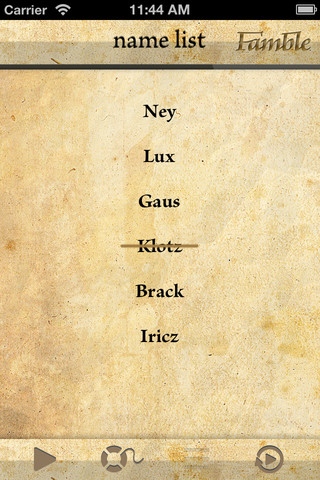Our services
Record books - Censuses - Cemeteries - Change of names - Holocaust data - Other sources of information
Hungarian Jewish Roots provides all kinds of research that are helpful when trying to find anything about your ancestors and other relatives. If you wish us to prepare your complete family tree with both your maternal and paternal ancestors we are the right partners for you. Just the same if you only want us to take a picture of a building that once belonged to your great-grandparents - we are happy to assist you in it, too.
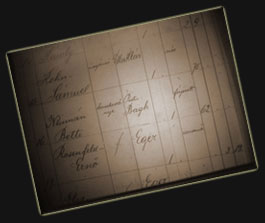
We always start our research by checking the Jewish and state birth, marriage and death records. It was Emperor Joseph the second who ordered the Jews to take a family name. Before that time they used Jewish names - Jichak ben Avram or Jichak, Avram's son. Now the official language was German in the Austrian empire - so the Jews took German names. Hence the typical Jewish names - Schön, Grünfeld, Sonnenschein etc.
Though Emperor Joseph also ordered the Jews to have the birth, death and marriage records kept it was not until 1851 that all the Jewish communities followed these regulations. There were some exceptions that make one's heart beat quickly - in some places records are to be found already from the 1790's. But these are only the exceptions.
On the 1st of October 1895, the compulsory State recording law became in effect. Only a handful of Jewish communities kept on recording the births, marriages and deaths. For privacy reasons state recordings can only be searched 30 years after one's death, 60 years after the marriage took place and 90 years after one's birth.
There are several causes why we face trouble when looking through the Jewish records.
As already mentioned compulsory (religious) recording took place only between 1851 and 1895. But even during this period there are some files missing. In certain places they only started in 1856 or the marriages were not recorded until 1875. Some books were lost during the Second World War, which also contributes to the difficulties of trying to locate our ancestors.
Another problem is that even during the second half of the 19th century recording was not waterproof. Again and again we find recordings at a later day - when someone was not recorded at his birth he faced problems when he wanted to get married. So with the help of others testifying for him in front of the authorities his birth got recorded some 20-30 years after it happened.
As boys were considered to be more important than girls it is no surprise that in some cases their births were not recorded. This is also the reason why we only have the newborn's father recorded but not the mother. But from the 1860's women and girls also appear in the records.
Yet another problem arose from the multi-linguist society our ancestors lived in. In Hungary, which was part of the Austrian empire, Jews spoke three languages in their everyday life. Yiddish among themselves, Hungarian when talking to their neighbours and Austrian in front of the authorities. When it came to record a Jewish birth, marriage or death all three languages were used. And this resulted in using different names for the same person - Moise in Hebrew, Mór in Hungarian and Moses in German referred to the very same person. Certainly it is easy to see the connection between Moise, Mór and Moses. But it is not always so. Sometimes these names do not correspond to each other at all - Alois and Lazar do not sound similar, do not look similar and still they were used by the same man.
It is even more complicated. There was no standard way of writing either the surnames or the first names. So they often used the nickname forms, too - like Resi, Rézi, Theresie, Teréz. And with the surnames it was the same. What we have at the end is a complete mixture of all possible ways of writing one single name: Rosi Geidatschik, Sali Gajduschek, Záli Gojdocsik, Szali Gajdatsik and Rosalie Gaidasek.
With two world wars lost Hungary was forced to give up territories that have belonged to Hungary in the past. And so the archives from these territories were also handed over to the states surrounding Hungary. Almost every Jewish family has had relatives in these territories and so we have to cross the border if we want to search the archives of Slovakia, Romania or Ukraine.
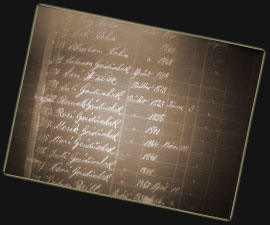
Censuses: Of all Jewish censuses the most important one was carried out in 1848. It is unfortunately not complete either but we can still find some useful pieces of information in it. In each place all the families were recorded according to their house numbers. The head of the family is on the top and he is followed by other members of the family. Their ages and their occupation are also stated.
There were also other censuses survived only partially. And so we always hope for results when going through the census of 1828 or the ones put together in the 18th century.

Cemeteries: Just as it is with the records, the information we find on the Jewish tombstones is also in three languages. On the oldest stones the inscriptions are in Hebrew. Then came the German writings and Hungarian inscriptions are mainly to be found on gravestones from the late 19th onwards.
The Jewish communities outside of Budapest were almost all fully destroyed in the Holocaust. Therefore, very few people remained after the war who were able to take care of the cemeteries and the tombs of their loved ones. Consequently those cemeteries that are no longer in use are in ruins. And though some smaller cemeteries have been renovated recently there is still a lot to be done if we want to have those cemeteries back in their old shape.
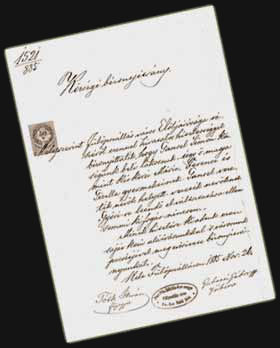
Change of names: It was always a sign of assimilation that Jews - or others of foreign origin - "Hungarized" their names. They changed their names into a Hungarian one. This happened mostly in the last three decades of the 19th century and in the first two decades of the 20th century. Very often they simply translated their name - this is how Stern became Csillag, Weiss became Fehér and Klein became Kiss. In other cases they took the name of the place they were coming from - always followed by the vowel "i" at the end - this is how the name Vásárhelyi (from Vásárhely) or Dési (from Dés) appeared. And sometimes they simply picked a common Hungarian name - e.g. Kovács.
As changing the surname had legal consequences it was the Secretery of State who had to authorize the change. Therefore we find these petitions in the National Archives - if they were not lost.
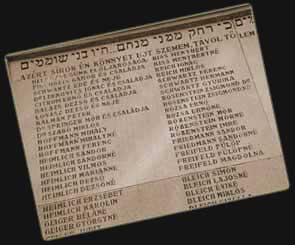
Holocaust data: there are several databases containing information on the 600,000 Hungarian Jews perished in the Shoa. Useful sources of information are the Walls of Remembrance in the cemeteries. After the war people engraved the names of their lost relatives into stone to remind the later generations of those perished. We find such walls in the Jewish cemeteries all around the country. And there are other lists of survivors and victims, too.
Other sources of information: there are hundreds of other places we can check when we are looking for someone. Real estate regitrations; tenant lists; obituaries and telephone books all help us to track down your relatives.

